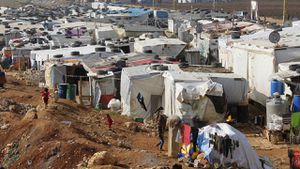In a surprising twist of fate, avian flu, typically associated with birds, has made a significant and alarming leap into the world of dairy cattle. Over 80 dairy herds across 11 U.S. states have been infected with the H5N1 strain, marking a historic first for this virus in cattle. Minnesota has just reported its first outbreak, leading to quarantines and raising concerns about the spread and impact of this disease.
This unexpected spread of avian flu to cattle was first detected in Kansas and Texas back in March. The virus, which originated from birds, found a new host in dairy cows, causing symptoms like fever, decreased milk production, and overall sickness. The U.S. Department of Agriculture (USDA) confirmed the presence of the virus, and since then, the situation has escalated. The Minnesota Board of Animal Health recently confirmed over 40 cows on a Benton County farm exhibiting signs of infection, which was later verified by the USDA’s National Veterinary Services Laboratories.
State veterinarian Brian Hoefs highlighted that while they were prepared for such an event, the detection in Minnesota has led to heightened vigilance and more rigorous testing among dairy herds. This incident has prompted farmers to be more proactive in monitoring their herds for signs of avian flu. With over 80 herds affected across states like Colorado, Idaho, Iowa, Michigan, New Mexico, North Carolina, Ohio, South Dakota, and Texas, the impact on the dairy industry is becoming increasingly significant.
The Centers for Disease Control and Prevention (CDC) have also reported cases of human infection. Three dairy workers, including two in Michigan, have tested positive for the H5N1 virus. The CDC has emphasized that while the virus currently does not appear to transmit between humans, it poses a notable risk to those in direct contact with infected animals. In light of these events, the CDC recommends that workers handling sick cows use personal protective equipment (PPE) to mitigate the risk of transmission.
The challenges posed by the outbreak are multifaceted. Dairy farmers must dispose of milk from infected cows to prevent the virus from entering the food supply, and entire herds are being quarantined for at least 30 days to halt the spread. The economic toll is considerable, as some cows have died or were slaughtered after failing to recover, impacting the livelihoods of farmers and the dairy market at large.
Understanding the broader context of avian flu is crucial. Bird flu viruses are typically hosted by wild birds, especially waterfowl. These birds can carry the virus without showing symptoms, spreading it to domestic poultry, and occasionally to other mammals. The H5N1 strain has been causing sporadic outbreaks in poultry around the world, leading to large-scale culling and significant economic losses. The jump to cattle adds a new dimension to the virus's impact and threatens to complicate control efforts.
The USDA reports that while the majority of infected cows recover from the illness, the outbreaks have led to secondary infections such as pneumonia and digestive issues. These secondary problems not only exacerbate the health crisis in affected herds but also increase the economic burden on farmers. For example, a dairy farm in South Dakota had to send 24 cows to slaughter due to complications from the virus.
The broader implications of this outbreak extend beyond animal health. The presence of H5N1 in cattle raises new concerns about food safety and zoonotic diseases—diseases that can jump from animals to humans. While pasteurized dairy products remain safe for consumption, the threat to those working closely with infected animals cannot be understated. In Mexico, a related virus, H5N2, led to a fatal human infection, underscoring the potential human health risks.
Current scientific understanding suggests that the transmission of avian flu to cattle likely occurred through indirect contact with infected birds or contaminated environments. Farms with mixed animal species or close proximities to wild bird populations are particularly vulnerable. These findings underscore the importance of biosecurity measures to prevent cross-species infection and contain the virus's spread.
Control measures for avian flu in poultry involve rigorous biosecurity protocols, monitoring, and, when necessary, culling of infected flocks. Applying these measures to dairy cattle is complex due to the scale and nature of dairy farming. Unlike poultry, dairy cows represent a more significant economic investment and are integral to daily farming operations. Quarantining entire herds and disposing of large quantities of milk present logistical and economic challenges.
Looking ahead, there are immediate and long-term strategies that must be considered. Short-term, increased testing and isolation of infected herds are crucial. Dairy farmers are encouraged to enhance biosecurity practices, monitor their herds vigilantly, and report any signs of illness promptly. State and federal agencies are likely to ramp up surveillance efforts to identify and control new outbreaks swiftly.
In the long term, research into vaccines for avian flu tailored to cattle may become a priority. Studies on how the virus adapts to different hosts could provide critical insights into preventing future cross-species transmission. Additionally, enhancing our understanding of avian flu dynamics in wild bird populations can inform better strategies to protect domestic animals and prevent similar occurrences.
As the situation unfolds, collaboration between veterinary researchers, epidemiologists, farmers, and policy makers will be essential to managing the outbreak and mitigating its effects. Increasing awareness and preparedness can reduce the risks associated with such unexpected disease crossovers.
The emergence of avian flu in dairy cattle is a stark reminder of the interconnectedness of animal and human health. It calls for a holistic approach to disease control that considers the ecological, social, and economic dimensions. By bolstering biosecurity, advancing research, and fostering cooperative efforts among stakeholders, it is possible to navigate these health challenges and safeguard both animal and human populations.



